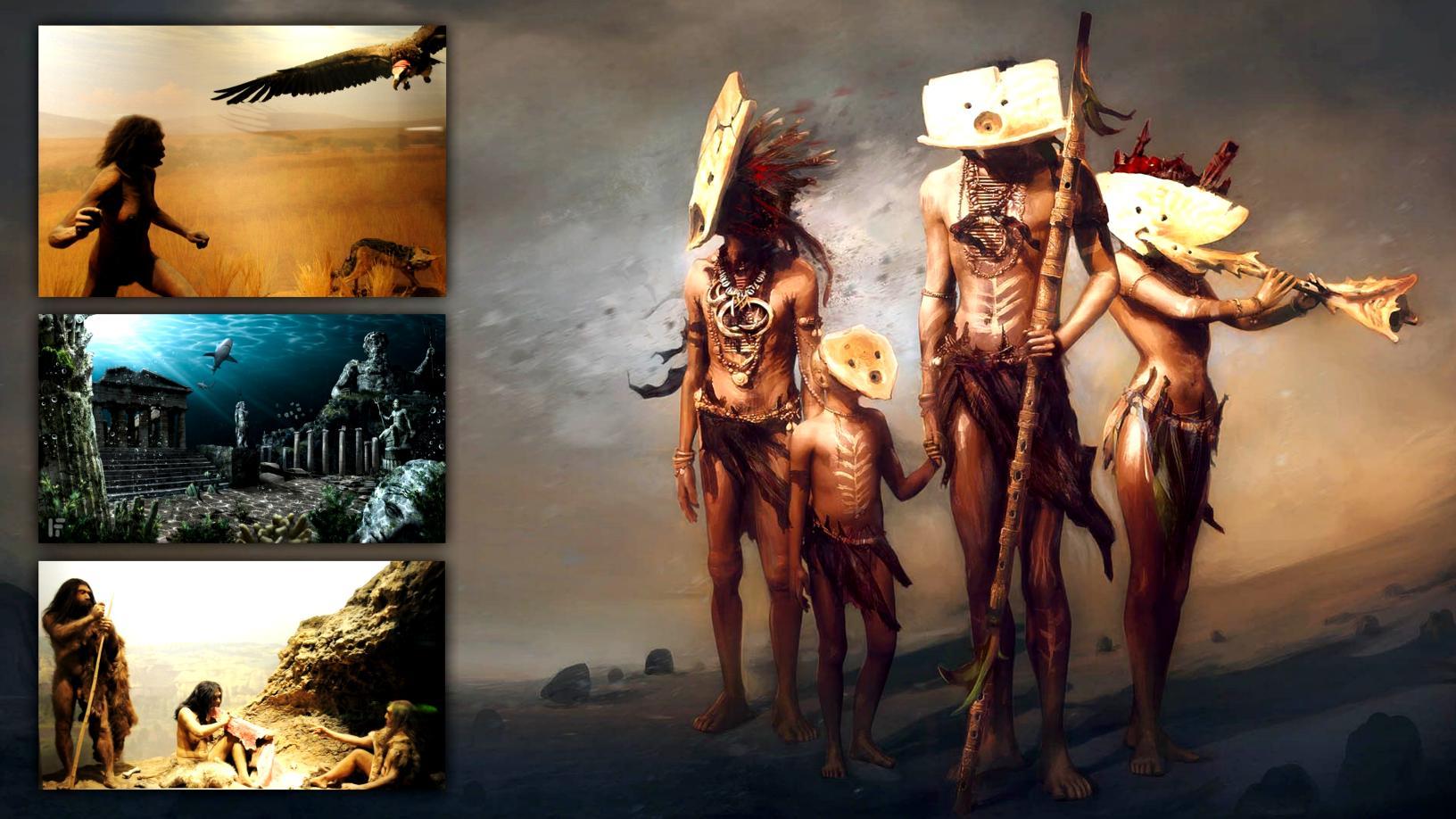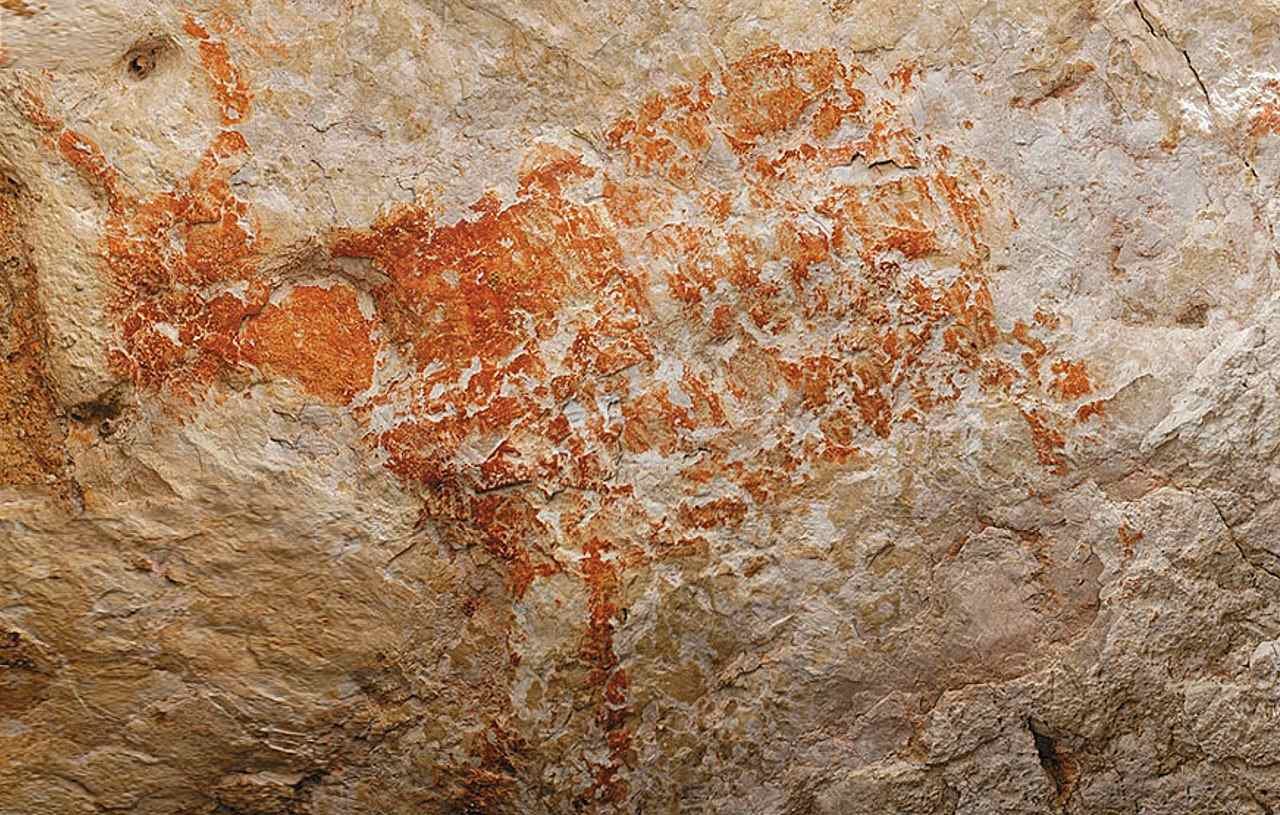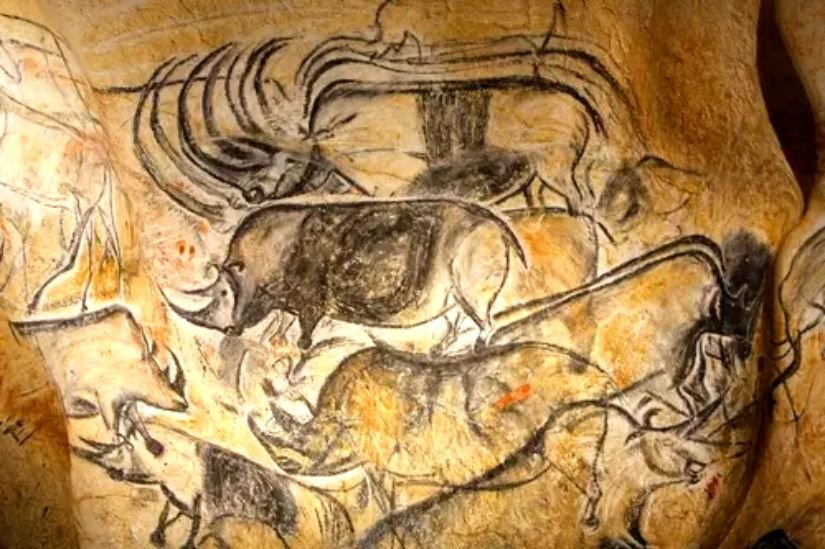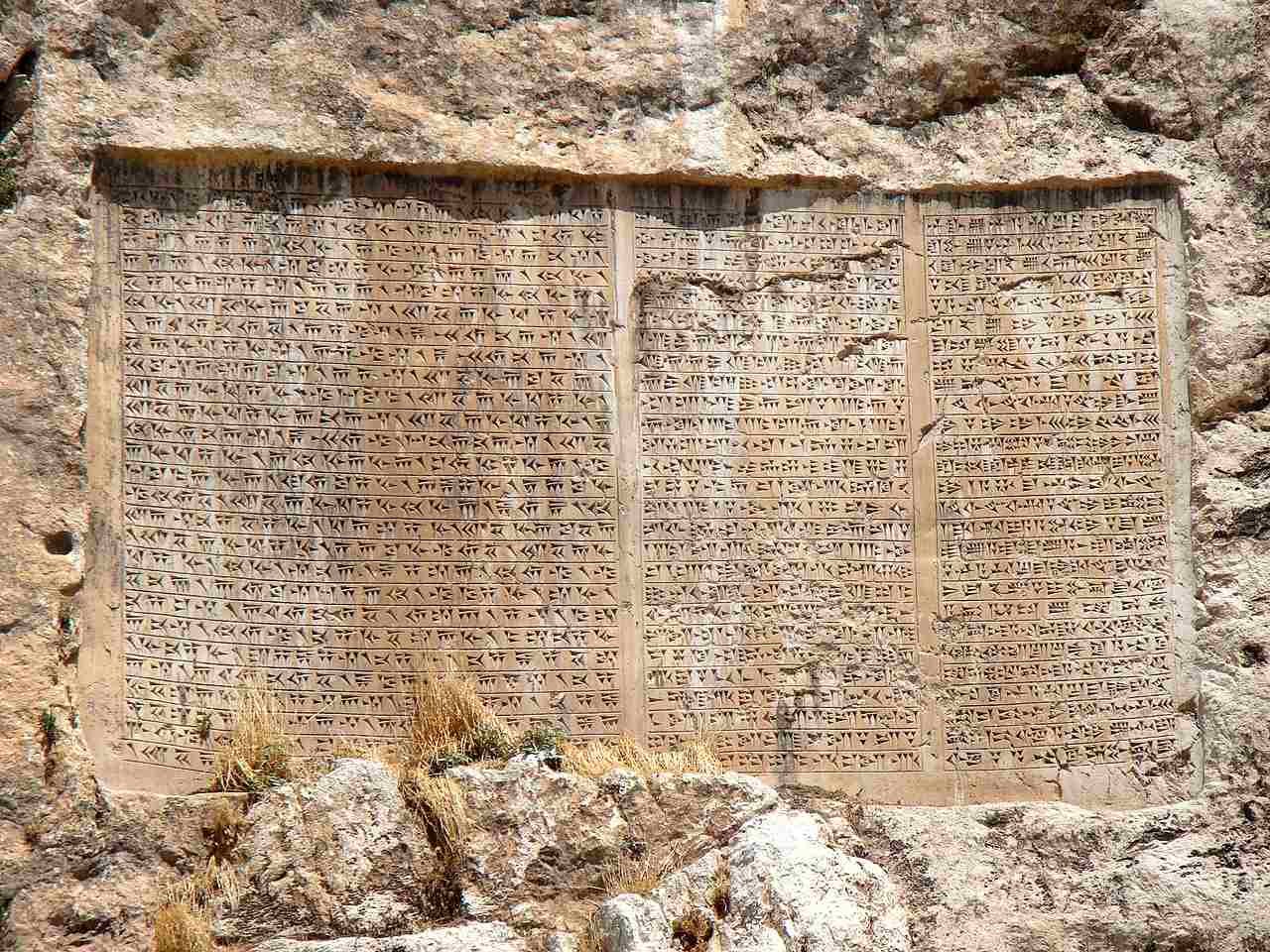Many significant locations, objects, cultures and groups throughout history have been lost, inspiring archaeologists and treasure-hunters around the world to search for them. The existence of some of these places or items, particularly those from ancient history, is legendary and remains in question.

We know there are thousands of such accounts if we start counting, but here in this article, we have listed out some of the most famous accounts of ‘lost history’ that are really strange and intriguing at the same time:
1 | Previously lost history
Troy
The Ancient City Troy ― the city which was the setting of the Trojan War described in the Greek Epic Cycle, in particular in the Iliad, one of the two epic poems attributed to Homer. Troy was discovered by Heinrich Schliemann, a German businessman and a pioneer in the field of archaeology. Though this find has been disputed. Found in the 1870s, the city was lost between 12th century BC and 14th century BC.
Olympia
The Greek place of worship Olympia, a small town in Elis on the Peloponnese peninsula in Greece, famous for the nearby archaeological site of the same name, which was a major Panhellenic religious sanctuary of ancient Greece, where the ancient Olympic Games were held. It was found by German archaeologists in 1875.
The lost legions of Varus
The Lost Legions Of Varus was last seen in 15 AD and again found in 1987. Publius Quinctilius Varus was a Roman general and politician under the first Roman emperor Augustus between 46 BC and September 15, 9 AD. Varus is generally remembered for having lost three Roman legions when ambushed by Germanic tribes led by Arminius in the Battle of the Teutoburg Forest, whereupon he took his own life.
Pompeii
Roman cities of Pompeii, Herculaneum, Stabiae, and Oplontis all buried in the eruption of Mount Vesuvius. It was lost 79 AD, and rediscovered in 1748.
The Nuestra Señora de Atocha
The Nuestra Señora de Atocha, a Spanish treasure galleon and the most widely known vessel of a fleet of ships that sank in a hurricane off the Florida Keys in 1622. It was found in 1985. At the time of her sinking, Nuestra Señora de Atocha was heavily laden with copper, silver, gold, tobacco, gems, and indigo from Spanish ports at Cartagena and Porto Bello in New Granada ― present-day Colombia and Panama, respectively ― and Havana, bound for Spain. The ship was named for the parish of Atocha in Madrid.
The RMS Titanic
The RMS Titanic was lost in 1912, and found in 1985. Who doesn’t know about this legend British passenger liner operated by the White Star Line that sank in the North Atlantic Ocean in the early morning hours of 15 April 1912, after striking an iceberg during her maiden voyage from Southampton to New York City? Of the estimated 2,224 passengers and crew aboard, more than 1,500 died, making the sinking one of modern history’s deadliest peacetime commercial marine disasters.
2 | Still lost history
Ten lost tribes of Israel
Ten Lost Tribes of Israel were lost following the invasion by Assyria in 722 BC. The ten lost tribes were the ten of the Twelve Tribes of Israel that were said to have been deported from the Kingdom of Israel after its conquest by the Neo-Assyrian Empire circa 722 BCE. These are the tribes of Reuben, Simeon, Dan, Naphtali, Gad, Asher, Issachar, Zebulun, Manasseh, and Ephraim. Claims of descent from the “lost” tribes have been proposed in relation to many groups, and some religions espouse a messianic view that the tribes will return. In the 7th and 8th centuries CE, the return of the lost tribes was associated with the concept of the coming of the messiah.
The lost army of Cambyses:
The Lost Army of Cambyses II — an army of 50,000 soldiers that disappeared in a sandstorm in the Egyptian desert around 525 BC. Cambyses II was the second King of Kings of the Achaemenid Empire from 530 to 522 BC. He was the son and successor of Cyrus the Great.
The Ark of the Covenant:
The Ark of the Covenant, also known as the Ark of the Testimony, and in a few verses across various translations as the Ark of God, was a gold-covered wooden chest with lid cover described in the Book of Exodus as containing the two stone tablets of the Ten Commandments. According to various texts within the Hebrew Bible, it also contained Aaron’s rod and a pot of manna.
The Ark of the Covenant was lost after the Babylonian invasion of Jerusalem. Since its disappearance from the Biblical narrative, there have been a number of claims of having discovered or of having possession of the Ark, and several possible places have been suggested for its location including:
Mount Nebo in Jerusalem, The Ethiopian Orthodox Tewahedo Church in Axum, a deep cave in the Dumghe mountains in Southern Africa, Chartres Cathedral of France, Basilica of St. John Lateran in Rome, Mount Sinai in the Valley of Edom, Herdewyke in Warwickshire, England, the Hill of Tara in Ireland and etc.
While many believe the Anubis Shrine (Shrine 261) of Pharaoh Tutankhamun’s Tomb, found in the Valley of the Kings, Egypt, could be the Ark of the Covenant.
The statue of Marduk
The Statue of Marduk – important Babylonian cult statue lost at some point during the 5th–1st centuries BC. Also known as the Statue of Bêl, the Statue of Marduk was the physical representation of the god Marduk, the patron deity of the ancient city of Babylon, traditionally housed in the city’s main temple, the Esagila.
The Holy Grail
The Holy Grail, also known as the Holy Chalice, is in some Christian traditions the vessel that Jesus used at the Last Supper to serve wine. It is believed to have magical powers. In relic veneration, several artifacts became identified as the Holy Grail. Two artifacts, one in Genoa and one in Valencia, became particularly well known and are identified as the Holy Grail.
The Ninth Roman Legion
The Ninth Roman Legion disappeared from history after 120 AD. Legio IX Hispana was a legion of the Imperial Roman army that existed from the 1st century BC until at least AD 120. The legion fought in various provinces of the late Roman Republic and early Roman Empire. It was stationed in Britain following the Roman invasion in 43 AD. The legion disappears from surviving Roman records after c. AD 120 and there is no extant account of what happened to it.
The Roanoke Colony
In between 1587 and 1588, the Roanoke Colony of Roanoke Island, North Carolina Settlers of the first English colony in the New World vanish, leaving an abandoned settlement and the word “Croatoan,” the name of a nearby island, carved into a post.
The Money Pit on Oak Island
The Money Pit on Oak Island, a lost treasure from pre-1795. The Oak island is best known for various theories about possible buried treasure or historical artifacts, and the associated exploration.
The Mahogany ship
The Mahogany Ship — an ancient shipwreck which was lost somewhere near Warrnambool, Victoria, Australia. It was last seen in 1880.
The lost Dutchman’s gold mine
According to a popular American legend, a rich gold mine is hidden somewhere in the southwestern United States. The location is generally believed to be in the Superstition Mountains, near Apache Junction, east of Phoenix, Arizona. Since 1891, there have been many stories about how to find the mine, and each year people search for the mine. Some have died on the search.
Victoria’s parliamentary mace
Victoria’s Parliamentary Mace was lost or stolen to be never found again. In 1891, a precious medieval mace was stolen from Victoria’s Parliament, sparking one of the greatest unsolved mysteries in Australian history.
The Irish crown jewels
The Jewels Belonging to the Most Illustrious Order of Saint Patrick, commonly called the Irish Crown Jewels or State Jewels of Ireland, were the heavily jewelled star and badge regalia created in 1831 for the Sovereign and Grand Master of the Order of St. Patrick. They were stolen from Dublin Castle in 1907 along with the collars of five knights of the order. The theft has never been solved and the jewels have never been recovered.
Twin sisters
Twin Sisters, a pair of cannons used by Texas Military Forces during the Texas Revolution and American Civil War, were lost in 1865.
Amelia Earhart and her aircraft
Amelia Mary Earhart was an American aviation pioneer and author. Earhart was the first female aviator to fly solo across the Atlantic Ocean. She set many other records, wrote best-selling books about her flying experiences, and was instrumental in the formation of The Ninety-Nines, an organization for female pilots.
During an attempt to make a circumnavigational flight of the globe in 1937 in a Purdue-funded Lockheed Model 10-E Electra, Earhart and navigator Fred Noonan disappeared over the central Pacific Ocean near Howland Island. Investigators have never been able to trace them or their aircraft’s remains. Earhart was declared dead on January 5, 1939.
The Amber Room
The Amber Room was a chamber decorated in amber panels backed with gold leaf and mirrors, located in the Catherine Palace of Tsarskoye Selo near Saint Petersburg. Constructed in the 18th century in Prussia, the room was dismantled and eventually disappeared during World War II. Before its loss, it was considered an “Eighth Wonder of the World”. A reconstruction was installed in the Catherine Palace between 1979 and 2003.
Flight 19
On December 5, 1945, Flight 19 – the five TBF Avengers – was lost with all 14 airmen within the Bermuda Triangle. Before losing radio contact off the coast of southern Florida, Flight 19’s flight leader was reportedly heard saying: “Everything looks strange, even the ocean,” and “We are entering white water, nothing seems right.” To make things even stranger, PBM Mariner BuNo 59225 had also lost with 13 airmen on the same day while searching for Flight 19, and they have never been found again.
Lord Nelson’s Chelengk
“Admiral Lord Nelson’s diamond Chelengk is one of the most famous and iconic jewels in British history. Presented to Nelson by the Sultan Selim III of Turkey after the Battle of the Nile in 1798, the jewel had thirteen diamond rays to represent the French ships captured or destroyed at the action.
Later in 1895, Nelson’s family sold the Chelengk at an auction and it eventually found its way to the newly opened National Maritime Museum in Greenwich where it was a star exhibit. In 1951, the jewel was stolen in a daring raid by an infamous cat-burglar and lost forever.
The lost Jules Rimet FIFA World Cup Trophy
The Jules Rimet Trophy, awarded to the winner of the football World Cup, was stolen in 1966 prior to the 1966 FIFA World Cup in England. The trophy was later recovered by a dog named Pickles who was later commended and gained a cult following for his heroism.
In 1970, Brazil received the Jules Rimet Trophy in perpetuity after winning the World Cup for the third time. But in 1983, the trophy was again stolen from a display case in Rio de Janeiro, Brazil, that was bulletproof but for its wooden frame. A banker and football club agent called Sérgio Pereira Ayres was the mastermind of the theft. Though the FIFA World Football Museum has since found the trophy’s original base, it has still been missing for nearly four decades.
The lost tombs of great historical figures
To this day, nobody has any idea about where some of the greatest historical icons’ tombs are located. Below are some of the great historical figures whose lost tombs are still to be found:
- Alexander the Great
- Genghis Khan
- Akhenaten, the father of Tutankhamun
- Nefertiti, the Queen of Egypt
- Alfred, King of Wessex
- Attila, Ruler of the Huns
- Thomas Paine
- Leonardo da Vinci
- Mozart
- Cleopatra & Mark Anthony
The Library of Alexandria
The Great Library of Alexandria in Alexandria, Egypt, was one of the largest and most significant libraries of the ancient world. The Library was part of a larger research institution called the Mouseion, which was dedicated to the Muses, the nine goddesses of the arts. According to historians, at one point, more than 400,000 scrolls were housed in the library. Alexandria had long been known for its violent and volatile politics. Therefore, the Great Library was burned down or destroyed in one or more historical wars and riots.
3 | Still lost but apocryphal history
The Island of Atlantis
Atlantis, a likely mythical island nation mentioned in Plato’s dialogues “Timaeus” and “Critias,” has been an object of fascination among western philosophers and historians for nearly 2,400 years. Plato (c.424–328 B.C.) describes it as a powerful and advanced kingdom that sank, in a night and a day, into the ocean around 9,600 B.C.
The ancient Greeks were divided as to whether Plato’s story was to be taken as history or mere metaphor. Since the 19th century, there has been renewed interest in linking Plato’s Atlantis to historical locations, most commonly the Greek island of Santorini, which was destroyed by a volcanic eruption around 1,600 B.C.
El Dorado: The lost city of Gold
El Dorado, originally El Hombre Dorado or El Rey Dorado, was the term used by the Spanish Empire to describe a mythical tribal chief of the Muisca people, an indigenous people of the Altiplano Cundiboyacense of Colombia, who, as an initiation rite, covered himself with gold dust and submerged in Lake Guatavita.
Through the centuries, this story led people to go in search of the city of gold. In the 16th and 17th centuries, Europeans believed that somewhere in the New World there was a place of immense wealth known as El Dorado. Their searches for this treasure wasted countless lives, drove at least one man to suicide, and put another man under the executioner’s axe.
The lost ship of the desert
The legend about a long-lost vessel buried beneath the California desert has persisted for centuries. Theories range from a Spanish galleon to a Viking Knarr — and everything in between. There’s no historical account, or you will find a little proof of these stories. But those who believe in its existence point to the way water once covered this arid landscape. Mother Nature leaves open the possibility of a nautical mystery, they argue.
Nazi Gold Train
Legend has it that in the final days of World War II, Nazi soldiers loaded an armoured train in Breslau, Poland with looted valuables such as gold, precious metals, jewels and weapons. The train departed and headed west toward Waldenburg, about 40 miles far. However, somewhere on the way, the train with all its valuable treasures vanished in the Owl Mountains.
Over the years, many have tried to find the legendary “Nazi Gold Train” but none has been able to do so. Historians claim there is no evidence that can prove the existence of the “Nazi Gold Train.” While it is true that, during the war, Hitler ordered to create a secret network of underground tunnels in the Owl Mountains.
How did humans almost become extinct about 70,000 years ago?
Humans almost become extinct about 70,000 years ago when the total population dropped below 2,000. But no one is sure exactly why or how it all happened. However, the “Toba catastrophe theory” says that an enormous supervolcano eruption occurred around 70,000 BC, as the same time humanity’s biggest DNA bottleneck. Research suggests that this eruption of a volcano called Toba, on Sumatra in Indonesia, blocked the sun across much of Asia for 6 years in a row, causing a harsh volcanic winter and a 1,000-year-long cooling period on earth.
According to the “genetic bottleneck theory”, between 50,000 and 100,000 years ago, human populations sharply decreased to 3,000–10,000 surviving individuals. It is supported by some genetic evidence suggesting that today’s humans are descended from a very small population of between 1,000 and 10,000 breeding pairs that existed about 70,000 years ago.
How 97% of human history is lost today?
If we look back in history we will find there are thousands of mysterious events that took place within a tiny fraction of human history. And if we keep aside the cave paintings (which wouldn’t make a big difference), the fraction that our historians and scientists really seem to know is perhaps not more than 3-10%.


Historians acquired most of the detailed ancient history from various scripts. And the Mesopotamian civilization, consisting of people we call Sumerians, first made usage of written script over 5,500 years ago. So before that, what happened in human history??

What exactly is human history? What do we should consider to be human history? And how much we know of it?
There are two different ways to define the timeline of human history and determine how much we know of these timelines:
- Way 1: “Anatomically Modern homo sapiens” or homo sapiens sapiens first existed around 200,000 years ago. So out of 200k years of human history, 195.5k are undocumented. Which means approximately 97%.
- Way 2: Behavioral modernity, however, occurred roughly 50,000 years ago. Which means approximately 90%.
Therefore, you could say that people stopped living like hunter-gatherers only 10,000 years ago, but the people before them were pretty human, and their stories have been lost forever.




